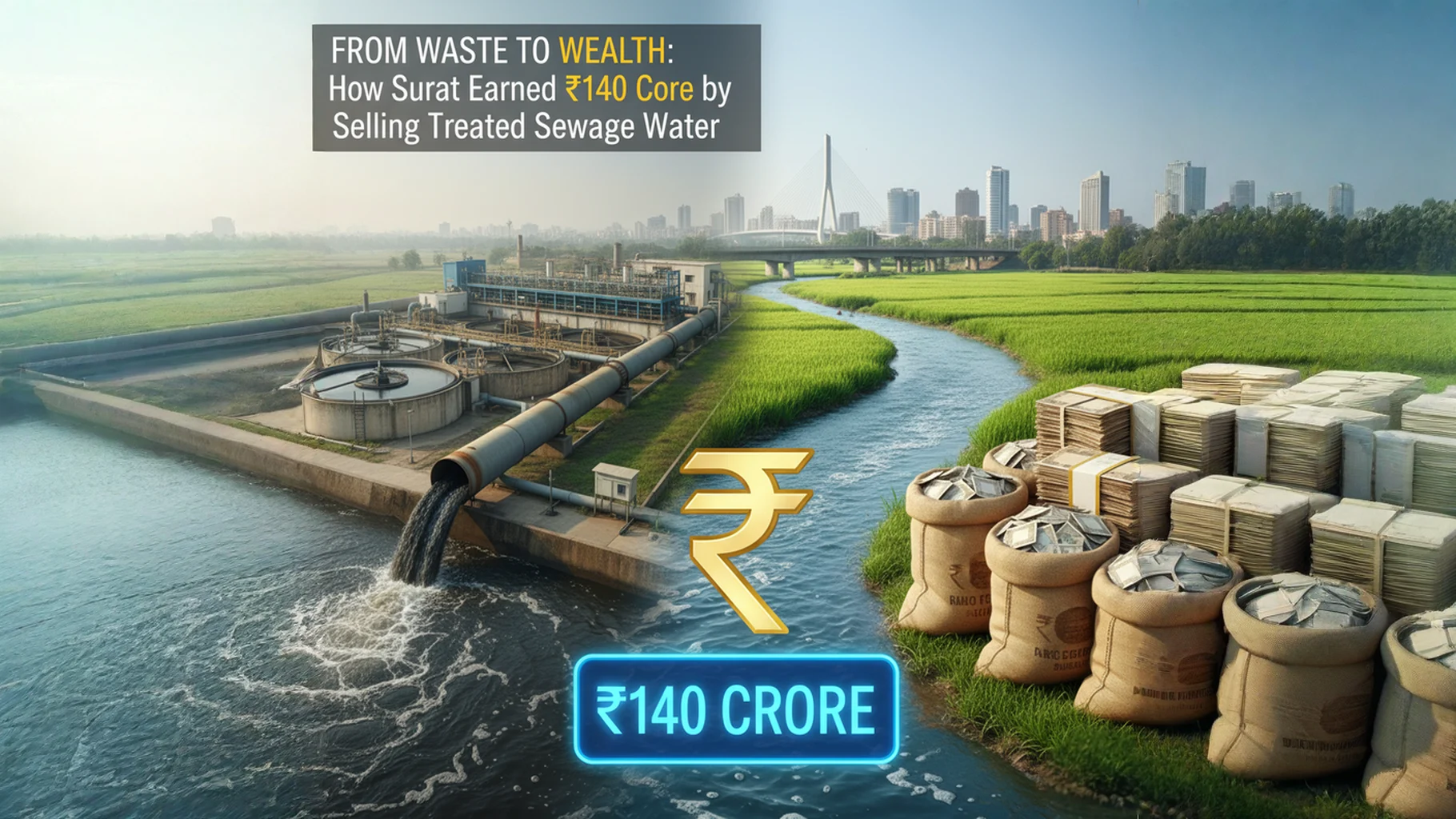Surat, often called the “Diamond City of India,” is now making headlines for a very different kind of brilliance—its innovative approach to waste management. In 2025, the Surat Municipal Corporation (SMC) revealed that it had earned an impressive ₹140 crore annually by selling treated sewage water to local industries. This bold initiative is not only strengthening the city’s economy but also setting an example in sustainability, resource conservation, and urban planning for the rest of India.
Turning Sewage into a Resource
For decades, untreated sewage water has been one of the biggest challenges for urban India. Typically, it is seen as waste—an environmental hazard rather than a resource. But Surat turned this problem into an opportunity. By investing in advanced sewage treatment plants (STPs), the city began purifying wastewater and selling it to nearby industries for reuse.
Industries that require vast amounts of water—like textiles, dyeing, paper, and chemicals—now rely on treated sewage water instead of depleting natural freshwater reserves. This approach addresses two major concerns simultaneously: meeting industrial demand and conserving precious freshwater for domestic consumption.
Economic Gains: ₹140 Crore and Counting
The annual revenue of ₹140 crore is not just a financial figure; it represents a paradigm shift in how cities can view and utilize their resources. By monetizing treated wastewater, Surat has created a sustainable business model that benefits both the municipality and private industries.
This revenue strengthens municipal finances, allowing funds to be redirected towards urban development projects, infrastructure upgrades, and public welfare initiatives. In effect, what was once a liability has been converted into a reliable revenue stream.
Environmental Benefits
The environmental impact of Surat’s wastewater initiative is equally significant. Freshwater scarcity is a growing crisis in India, with rivers and groundwater sources under immense stress. By supplying treated sewage water to industries, Surat is reducing the pressure on freshwater bodies and ensuring that the city’s growing population has continued access to clean drinking water.
Moreover, the reduced discharge of untreated sewage into rivers and lakes has improved local ecosystems. Cleaner water bodies mean healthier aquatic life, reduced pollution, and a more balanced environment for future generations.
Supporting Urban Development
The ripple effects of this initiative go far beyond water management. The additional income generated supports critical urban projects such as road development, housing schemes, and healthcare infrastructure. This directly contributes to improving the quality of life for Surat’s citizens.
At the same time, industries benefit from a stable, cost-effective water supply, which enhances their productivity and reduces operational risks. It’s a classic win-win scenario—municipalities earn revenue, industries secure resources, and the environment is conserved.
A Model for Other Cities
Surat’s success story carries lessons for the entire country. With India’s urban population rapidly expanding, demand for water is skyrocketing. At the same time, climate change and erratic rainfall patterns are making water resources increasingly unpredictable.
Cities like Delhi, Bengaluru, and Chennai have already faced severe water crises in recent years. By replicating Surat’s model, these cities could convert sewage from a problem into a solution. Large-scale adoption of treated wastewater for industrial use could drastically reduce stress on natural resources and create new revenue streams for municipalities.
Future Potential
Experts believe that the potential for wastewater monetization in India is massive. With over 70,000 million liters of sewage generated every day, even treating a fraction of it could generate billions in revenue annually.
Surat’s model could also evolve further with advancements in water recycling technologies. In the near future, treated sewage could be used not just in industries but also for agriculture, landscaping, and even construction activities.
Conclusion
Surat’s achievement of earning ₹140 crore annually from selling treated sewage water is a landmark example of innovation in urban governance. It proves that with vision, investment, and determination, cities can turn their challenges into opportunities. By converting waste into wealth, Surat is not just conserving water but also driving sustainable development, setting a benchmark for cities across India and the world.
The Diamond City has once again shown its sparkle—not through gemstones this time, but through sustainable innovation.
Disclaimer: This article is based on information available from public sources. It has not been reported by EQMint journalists. EQMint has compiled and presented the content for informational purposes only and does not guarantee its accuracy or completeness. Readers are advised to verify details independently before relying on them.



